Advanced Radar Absorbing Ceramic-Based Materials for Multifunctional Applications in Space Environment
Abstract
:1. Introduction
2. Materials and Methods
2.1. Carbon/Carbon Shell as a Thermal Protection System
- Thermal expansion compatibility between materials to avoid internal stresses due to the increasing temperature;
- Oxidation resistance for the plasma exposed layer;
- Great heat capacity for the core material to put down the temperature;
- Mechanical properties not degrading at high temperatures;
- High emissivity of the external layer in order to allow as much heat emission as possible;
- Low thermal conductivity of the inner layers in order to maintain a low temperature in the cold structure of the vehicle;
- Low catalycity of the plasma exposed surface in order to limit the surface heat flux: in fact, the outer structure could catalyze the exothermic recombination of disassociated species present in the hypersonic flow, thus resulting in heat flux increasing.
2.2. Multilayered Carbon Micro-/Nano-composite as an EM Shielding System
3. Results
3.1. Process Methodology
- Tile for cube-sat faces—The external surface is the EM impinged layer of the optimized carbon nanocomposite multilayered plate-shaped structure, aimed at microwave shielding, i.e., the satellite’s radar cross section reduction; the inner ceramic C/C bulk is imposed as a thermo-structural component to preserve the integrity and the correct working of the internal instrumentation from the severe thermo-mechanical stress experienced by the satellite during in orbit operations (see Figure 7).
- b. Shell for leading edge of sub-orbital aircraft—The C/C coating is externally exposed to the space conditions as TPS, and it is dimensioned to be totally eroded during the critical re-entry phase; the underlying nanocomposite-based lamination then acts as stealth component during the orbital operations (see Figure 8).
3.2. C/C Morphological and Thermo-Mechanical Analysis
3.3. Multilayers Absorbing Cross Section Evaluation
3.4. Numerical Simulation of Hybrid TPS/Stealth Structures
4. Conclusions
Author Contributions
Funding
Conflicts of Interest
References
- Thakre, P.; Yang, V. Chemical erosion of Carbon-Carbon/Graphite nozzles in solid-propellant rocket motors. J. Propuls. Power 2008, 24, 822–833. [Google Scholar] [CrossRef]
- Savage, G. Carbon-Carbon Composites; Chapman & Hall: London, UK, 1993. [Google Scholar]
- Schmidt, D.L. Carbon-Carbon Composite (CCC)—A Historical Perspective; Wright Laboratory Report: Dayton, OH, USA, 1996. [Google Scholar]
- Buckley, J.D.; Edle, D.D. Carbon-Carbon Materials and Composites, 1st ed.; Noyes Publications: Park Ridge, NJ, USA, 1993; pp. 1–17. [Google Scholar]
- Fitzer, E.; Manocha, L. Carbon Reinforcements and Carbon/Carbon Composites; Springer: Berlin, Germany, 1998; pp. 71–145. [Google Scholar]
- Windhorst, T.; Blount, G. Carbon-carbon composites: A summary of recent developments and applications. Mater. Des. 1997, 18, 11–15. [Google Scholar] [CrossRef]
- Sheffield, R.G. The official F-19 Stealth Fighter Handbook; Pam Williams: Philadelphia, PA, USA, 1989. [Google Scholar]
- Knott, E.F.; Shaeffer, J.; Tuley, M. Radar Cross Section, 2nd ed.; SciTech Publishing: Raleigh, NC, USA, 2004; pp. 7–11. [Google Scholar]
- Mosallaei, H.; Rahmat-Samii, Y. RCS reduction of canonical targets using genetic algorithm synthesized RAM. IEEE Trans. Antennas Propag. 2000, 48, 1594–1606. [Google Scholar] [CrossRef]
- Vinoy, K.J.; Jha, R.M. Radar Absorbing Materials—From Theory to Design and Characterization; Springer: Boston, MA, USA, 1996. [Google Scholar]
- Rea, S.P.; Linton, D.; Orr, E.; McConnell, J. Broadband high impedance surface design for aircraft HIRF protection. IEE Proc. Microw. Antennas Propag. 2006, 153, 307–313. [Google Scholar] [CrossRef]
- Liepe, M.; Barstow, B.; Padamsee, H. First studies for a low temperature higher-order-mode absorber for the Cornell ERL prototype. In Proceedings of the 2003 Particle Accelerator Conference (PAC 2003), Portland, OR, USA, 12–16 May 2003. [Google Scholar] [Green Version]
- Carlile, R.; Cavalli, A.; Cramer, W.; Hyde, R.; Seidler, W. Absorption of energy from a large amplitude electromagnetic pulse by a collisionless plasma. IEEE Trans. Antenna Propag. 1979, 27, 596–603. [Google Scholar] [CrossRef]
- Li, N.; Huang, Y.; Du, F.; He, X.; Lin, X.; Gao, H.; Ma, Y.; Li, F.; Chen, Y.; Eklund, P.C. Electromagnetic interference (EMI) shielding of single-walled carbon nanotube epoxy composites. Nano Lett. 2006, 6, 1141–1145. [Google Scholar] [CrossRef] [PubMed]
- Chang, C.M.; Chiu, J.C.; Jou, W.S.; Wu, T.L.; Cheng, W.H. New package scheme of a 25-Gb/s plastic transceiver module employing multiwall nanotubes for low electromagnetic interference. IEEE J. Sel. Top. Quantum Electron. 1989, 25, 1025–1031. [Google Scholar]
- Holloway, C.L.; DeLyser, R.R.; German, R.F.; McKenna, P.; Kanda, M. Comparison of electromagnetic absorber used in anechoic and semi-anechoic chambers for emissions and immunity testing of digital devices. IEEE Trans. Electromagn. Compat. 1997, 39, 33–47. [Google Scholar] [CrossRef]
- Bogush, V.; Borbotko, T.; Kolbun, N.; Lynkov, L. Novel composite shielding materials for suppression of microwave radiation. In Proceedings of the International Conference on Microwaves, Radar & Wireless Communications (MIKON 2006), Krakow, Poland, 22–24 May 2006. [Google Scholar]
- US Secretary of Army. Radar Attenuating Paint. U.S. Patent 4606848A, 13 August 1984. [Google Scholar]
- Micheli, D.; Pastore, R.; Gradoni, G.; Mariani Primiani, V.; Moglie, F.; Marchetti, M. Reduction of satellite electromagnetic scattering by carbon nanostructured multilayers. Acta Astronaut. 2013, 88, 61–73. [Google Scholar] [CrossRef]
- Costa, F.; Monorchio, A.; Carrubba, E.; Zolesi, V. Low RF reflectivity spacecraft thermal blanket by using high-impedance surface absorbers. In Proceedings of the 2012 ESA Workshop on Aerospace EMC, Venice, Italy, 21–23 May 2012. [Google Scholar]
- Liu, Q.; Cao, B.; Feng, C.; Zhang, W.; Zhu, S.; Zhang, D. High permittivity and microwave absorption of porous graphitic carbons encapsulating Fe nanoparticles. Compos. Sci. Technol. 2012, 72, 1632–1636. [Google Scholar] [CrossRef]
- Feng, Y.B.; Qiu, T.; Shen, C.Y. Absorbing properties and structural design of microwave absorbers based on carbonyl iron and barium ferrite. J. Magn. Magn. Mater. 2007, 318, 8–13. [Google Scholar] [CrossRef]
- Qing, Y.; Zhou, W.; Luo, F.; Zhu, D. Epoxy-silicone filled with multi-walled carbon nanotubes and carbonyl iron particles as a microwave absorber. Carbon 2010, 48, 4074–4080. [Google Scholar] [CrossRef]
- Shen, G.; Xu, M.; Xu, Z. Double-layer microwave absorber based on ferrite and short carbon fiber composites. Mater. Chem. Phys. 2007, 105, 268–272. [Google Scholar] [CrossRef]
- Neo, C.; Varadan, V. Design and development of electromagnetic absorbers with carbon fiber composites and matching dielectric layers. Smart Mater. Struct. 2001, 10, 1107–1110. [Google Scholar] [CrossRef]
- Micheli, D.; Apollo, C.; Pastore, R.; Marchetti, M. X-Band microwave Characterization of carbon-based nanocomposite material, absorption capability comparison and RAS design simulation. Compos. Sci. Technol. 2010, 70, 400–409. [Google Scholar] [CrossRef]
- Chen, M.; Zhu, Y.; Pan, Y.; Kou, H.; Xu, H.; Guo, J. Gradient multilayer structural design of CNTs/SiO2 composites for improving microwave absorbing properties. Mater. Des. 2011, 32, 3013–3016. [Google Scholar] [CrossRef]
- Belaabed, B.; Wojkiewicz, J.L.; Lamouri, S.; El Kamchi, N.; Lasri, T. Synthesis and characterization of hybrid conducting composites based on polyaniline/magnetite fillers with improved microwave absorption properties. J. Alloys Compd. 2012, 527, 137–144. [Google Scholar] [CrossRef]
- Musal, H.M.; Hahn, H.T. Thin-layer electromagnetic absorber. IEEE Trans. Magn. 1989, 25, 3851–3853. [Google Scholar] [CrossRef]
- De Rosa, I.M.; Mancinelli, R.; Sarasini, F.; Sarto, M.S.; Tamburrano, A. Electromagnetic design and realization of innovative fiber-reinforced broad-band absorbing screens. IEEE Trans. Electromagn. Compat. 2009, 51, 700–707. [Google Scholar] [CrossRef]
- Yang, Y.; Gupta, M.; Dudley, K. Towards cost-efficient EMI shielding materials using carbon nanostructure-based nanocomposites. Nanotechnology 2007, 18, 345701. [Google Scholar] [CrossRef]
- Hou, C.; Li, T.; Zhao, T.; Zhang, W.; Cheng, Y. Electromagnetic wave absorbing properties of carbon nanotubes doped rare metal/pure carbon nanotubes double-layer polymer composites. Mater. Des. 2012, 33, 413–418. [Google Scholar] [CrossRef]
- Micheli, D.; Apollo, C.; Pastore, R.; Bueno Morles, R.; Laurenzi, S.; Marchetti, M. Nanostructured composite materials for electromagnetic interference shielding applications. Acta Astronaut. 2011, 69, 747–757. [Google Scholar] [CrossRef]
- Endo, M.; Koyama, T.; Hishiyama, Y. Structural improvement of carbon fibers prepared from benzene. Jpn. J. Appl. Phys. 1976, 15, 2073–2076. [Google Scholar] [CrossRef]
- Hill, D.A. Electromagnetic Theory of Reverberation Chambers. 1998. Available online: https://www.nist.gov/publications/electromagnetic-theory-reverberation-chambers?pub_id=24427 (accessed on 13 September 2018).
- Holloway, C.L.; Hill, D.A.; Ladbury, J.; Koepke, G.; Garzia, R. Shielding effectiveness measurements of materials using nested reverberation chambers. IEEE Trans. Electromagn. Compat. 2003, 45, 350–356. [Google Scholar] [CrossRef]
- Micheli, D.; Morles, R.B.; Marchetti, M.; Moglie, F.; Mariani Primiani, V. Broadband electromagnetic characterization of carbon foam to metal contact. Carbon 2014, 68, 149–158. [Google Scholar] [CrossRef]
- Albano, M.; Micheli, D.; Gradoni, G.; Morles, R.B.; Marchetti, M.; Moglie, F.; Mariani Primiani, V. Electromagnetic shielding of thermal protection system for hypersonic vehicles. Acta Astronaut. 2013, 87, 30–39. [Google Scholar] [CrossRef]
- Strong, A.B. Fundamentals of Composites Manufacturing, 2nd ed.; Society of Manufacturing Engineers: Dearborn, MI, USA, 2007. [Google Scholar]
- Kim, J.K. Handbook of Composite Reinforcements; Lee, S.M., Ed.; John Wiley & Sons-VCH: Hoboken, NJ, USA, 1993. [Google Scholar]
- Manocha, L.M. High performance carbon-carbon composites. Sadhana 2003, 28, 349–358. [Google Scholar] [CrossRef] [Green Version]
- Sheehan, J.E.; Buesking, K.W.; Sullivan, B.J. Carbon-Carbon composite. Annu. Rev. Mater. Sci. 1994, 24, 19–44. [Google Scholar] [CrossRef]
- Morgan, P. Carbon Fibers and Their Composites; CRC Press: Boca Raton, FL, USA, 2005; pp. 551–582. [Google Scholar]
- Albano, M.; Delfini, A.; Pastore, R.; Micheli, D.; Marchetti, M. A New Technology for Production of High Thickness Carbon/Carbon Composites for Launchers Application. Acta Astronaut. 2016, 128, 277–285. [Google Scholar] [CrossRef]
- Trefilov, V.I. Ceramic and Carbon Matrix Composites; Springer: Berlin, Germany, 2012. [Google Scholar]
- Bansal, N.P.; Lamon, J. Ceramic Matrix Composites: Materials, Modeling and Technology; John Wiley & Sons: Hoboken, NJ, USA, 2014. [Google Scholar]
- Micheli, D.; Pastore, R.; Vricella, A.; Marchetti, M. Radar absorbing materials for cube stealth satellite. J. Br. Interplanet. Soc. 2014, 67, 369–380. [Google Scholar]
- Arnaut, L.R.; Moglie, F.; Bastianelli, L.; Mariani Primiani, V. Helical stirring for enhanced low-frequency performance of reverberation chambers. IEEE Trans. Electromagn. Compat. 2007, 59, 1016–1026. [Google Scholar] [CrossRef]
- Bastianelli, L.; Moglie, F.; Mariani Primiani, V. Evaluation of stirrer efficiency varying the volume of the reverberation chamber. In Proceedings of the IEEE International Symposium on Electromagnetic Compatibility (EMC 2016), Ottawa, ON, Canada, 26−28 July 2016. [Google Scholar]
- Corona, P.; Ladbury, J.; Latmiral, G. Reverberation-chamber research—Then and now: A review of early work and comparison with current understanding. IEEE Trans. Electromagn. Compat. 2002, 44, 87–94. [Google Scholar] [CrossRef]
- Micheli, D.; Barazzetta, M.; Carlini, C.; Diamanti, R.; Mariani Primiani, V.; Moglie, F. Testing of the carrier aggregation mode for a live LTE base station in reverberation chamber. IEEE Trans. Veh. Technol. 2016, 66, 3024–3033. [Google Scholar] [CrossRef]
- Micheli, D.; Barazzetta, M.; Moglie, F.; Mariani Primiani, V. Power boosting and compensation during OTA testing of a real 4G LTE base station in reverberation chamber. IEEE Trans. Electromagn. Compat. 2005, 57, 623–634. [Google Scholar] [CrossRef]
- Gagliardi, L.; Micheli, D.; Gradoni, G.; Moglie, F.; Mariani Primiani, V. Coupling between multipath environments through a large aperture. IEEE Antennas Wirel. Propag. Lett. 2015, 14, 1463–1466. [Google Scholar] [CrossRef]
- Moglie, F.; Micheli, D.; Laurenzi, S.; Marchetti, M.; Mariani Primiani, V. Electromagnetic shielding performance of carbon foams. Carbon 2012, 50, 1972–1980. [Google Scholar] [CrossRef]
- Micheli, D.; Santoni, F.; Giusti, A.; Delfini, A.; Pastore, R.; Vricella, A.; Albano, M.; Arena, L.; Piergentili, F.; Marchetti, M. Electromagnetic absorption properties of spacecraft and space debris. Acta Astronaut. 2017, 133, 128–135. [Google Scholar] [CrossRef]
- Clegg, J.; Marvin, A.C.; Dawson, J.F.; Porter, S.J. Optimization of stirrer designs in a reverberation chamber. IEEE Trans. Electromagn. Compat. 2005, 47, 824–832. [Google Scholar] [CrossRef]
- Pfennig, S.; Krauthäuser, H.G. Comparison of methods for determining the number of independent stirrer positions in reverberation chambers. In Proceedings of the IEEE International Symposium on Electromagnetic Compatibility, (EMC 2013), Denver, CO, USA, 5−9 August 2013. [Google Scholar]
- Moglie, F.; Mariani Primiani, V. Analysis of the independent positions of reverberation chamber stirrers as a function of their operating conditions. IEEE Trans. Electromagn. Compat. 2011, 53, 288–295. [Google Scholar] [CrossRef]
- Bastianelli, L.; Capra, S.; Gradoni, G.; Micheli, D.; Vricella, A.; Corinaldesi, V.; Mazzoli, A.; Moglie, F.; Mariani Primiani, V. Shielding Effectiveness Statistical Evaluation of Random Concrete Composites. In Proceedings of the 3rd IEEE Workshop on Metrology for Aerospace, Florence, Italy, 22–23 June 2016. [Google Scholar]
- Micheli, D.; Marchetti, M.; Pastore, R.; Vricella, A.; Gradoni, G.; Moglie, F.; Mariani Primiani, V. Shielding effectiveness of carbon nanotube reinforced concrete composites by reverberation chamber measurements. In Proceedings of the Conference on Electromagnetics in Advanced Applications (ICEAA 2015), Turin, Italy, 7–11 September 2015. [Google Scholar]
- Moglie, F.; Bastianelli, L.; Mariani Primiani, V. Reliable finite-difference time-domain simulations of reverberation chambers by using equivalent volumetric losses. IEEE Trans. Electromagn. Comatp. 2016, 58, 653–660. [Google Scholar] [CrossRef]
- Bastianelli, L.; Giacometti, L.; Mariani Primiani, V.; Moglie, F. Effect of absorber number and positioning on the power delay profile of a reverberation chamber. In Proceedings of the IEEE International Symposium on Electromagnetic Compatibility (EMC 2015), Dresden, Germany, 16–22 August 2015. [Google Scholar]
- Barazzetta, M.; Micheli, D.; Moglie, F.; Mariani Primiani, V. Over-the-air performance testing of a real 4G LTE base station in a reverberation chamber. In Proceedings of the IEEE International Symposium on Electromagnetic Compatibility (EMC 2014), Raleigh, NC, USA, 3–8 August 2014. [Google Scholar]
- Moglie, F.; Gradoni, G.; Bastianelli, L.; Mariani Primiani, V. A mechanical mode-stirred reverberation chamber inspired by chaotic cavities. In Proceedings of the IEEE Metrology for Aerospace, Benevento, Italy, 4–5 June 2015. [Google Scholar]
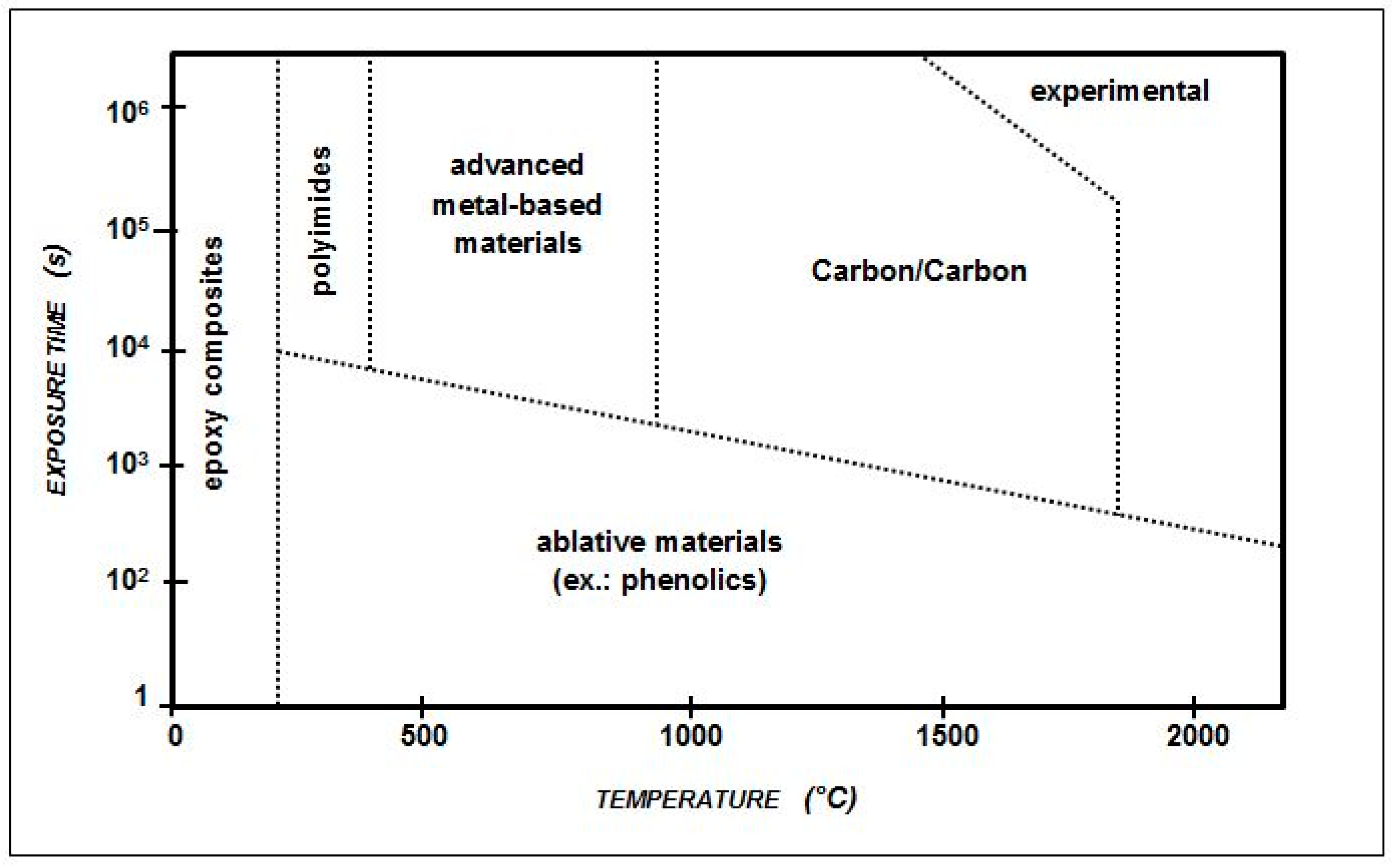
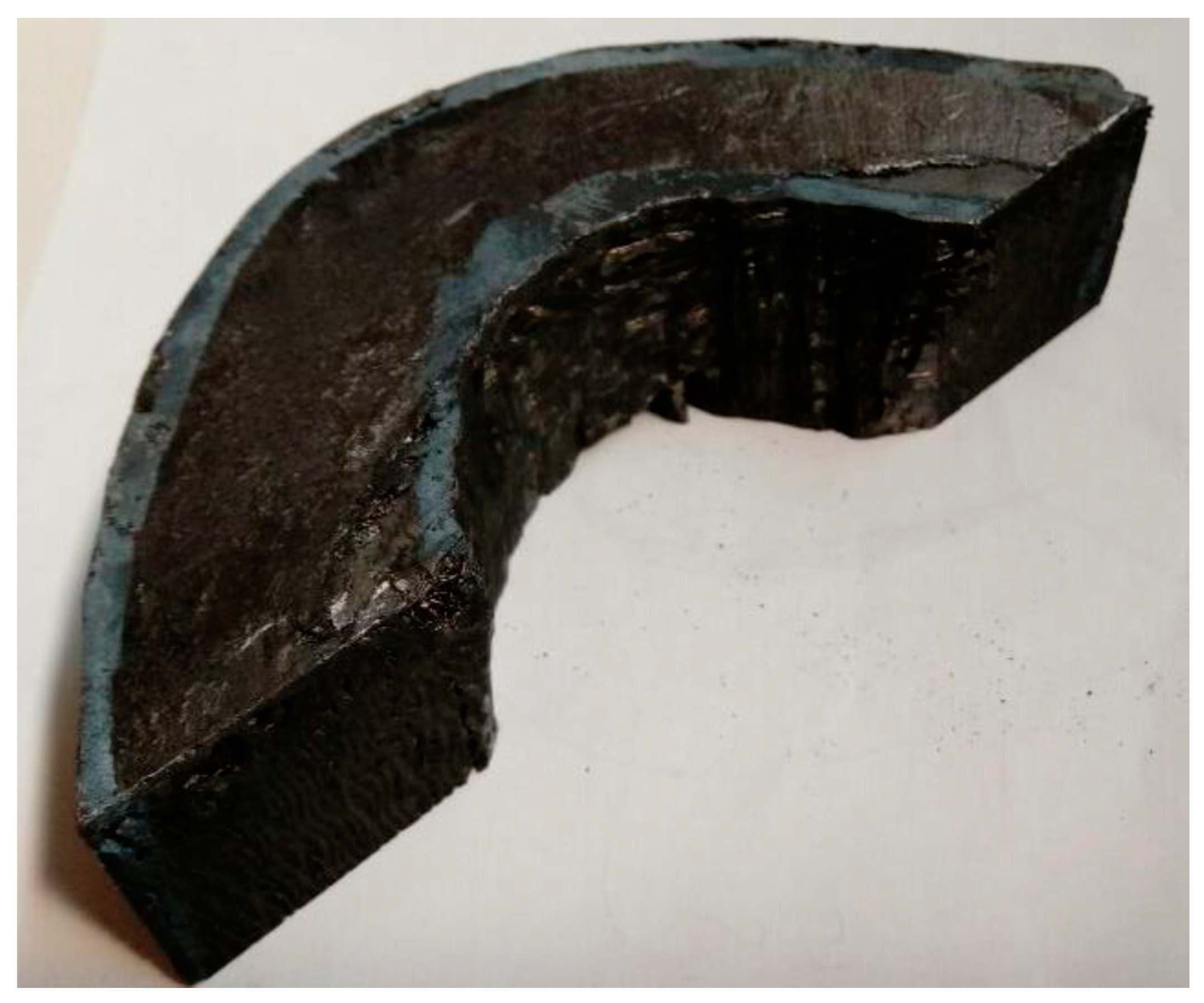



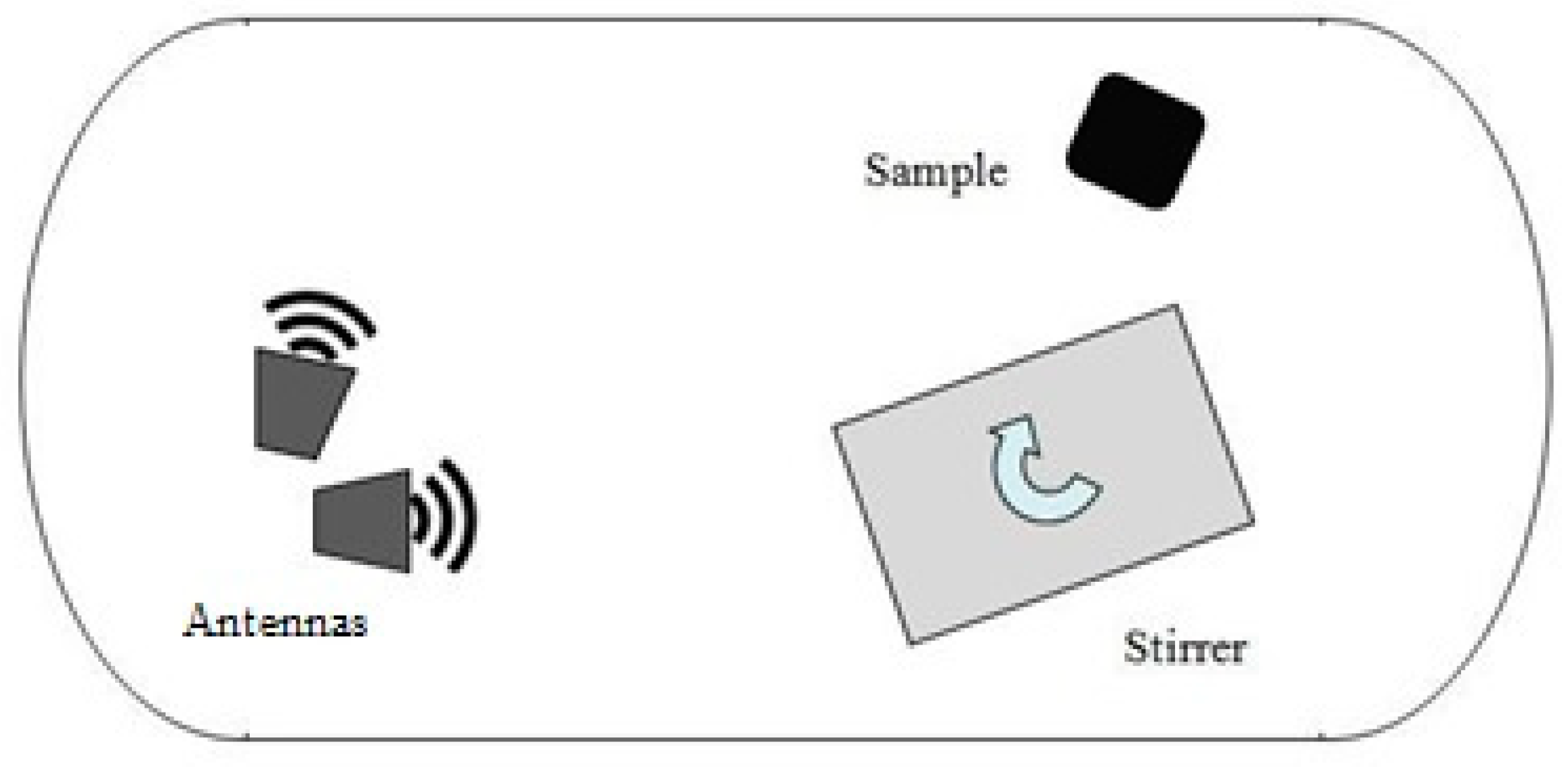
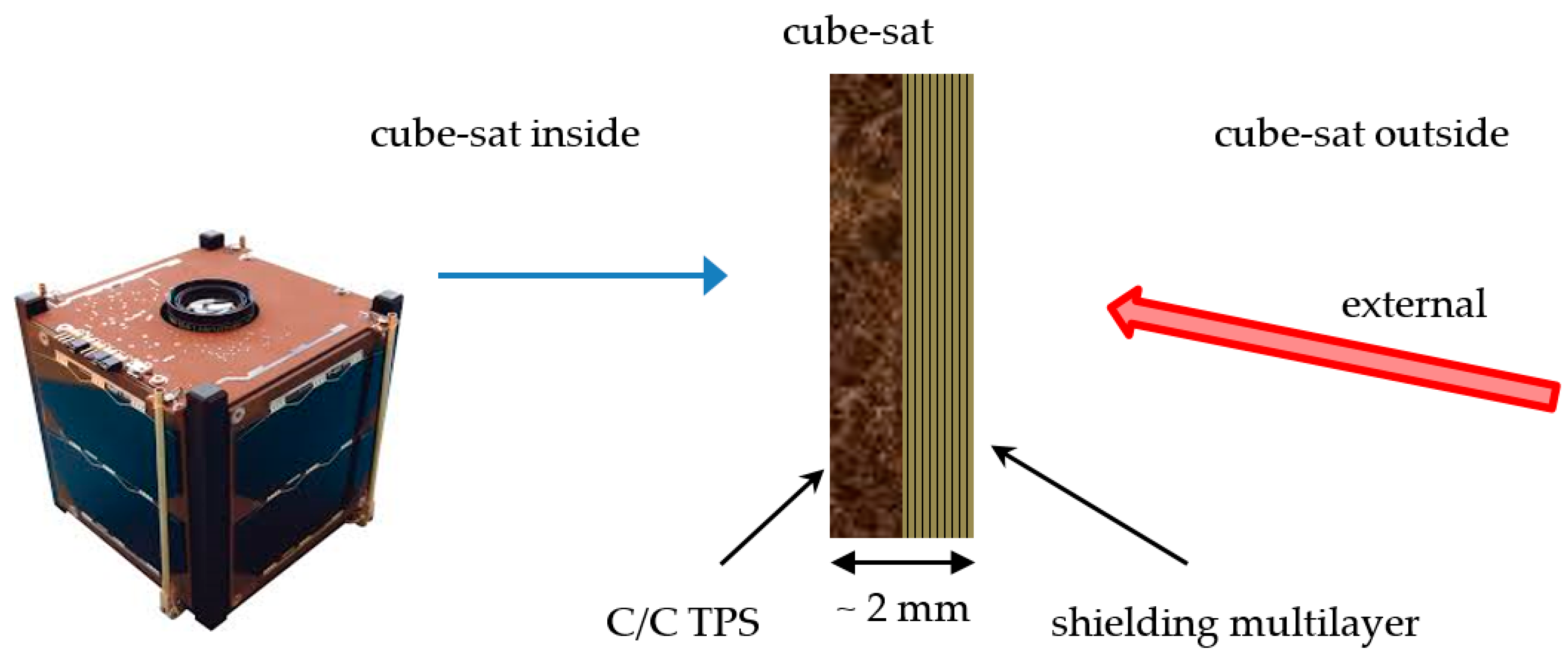
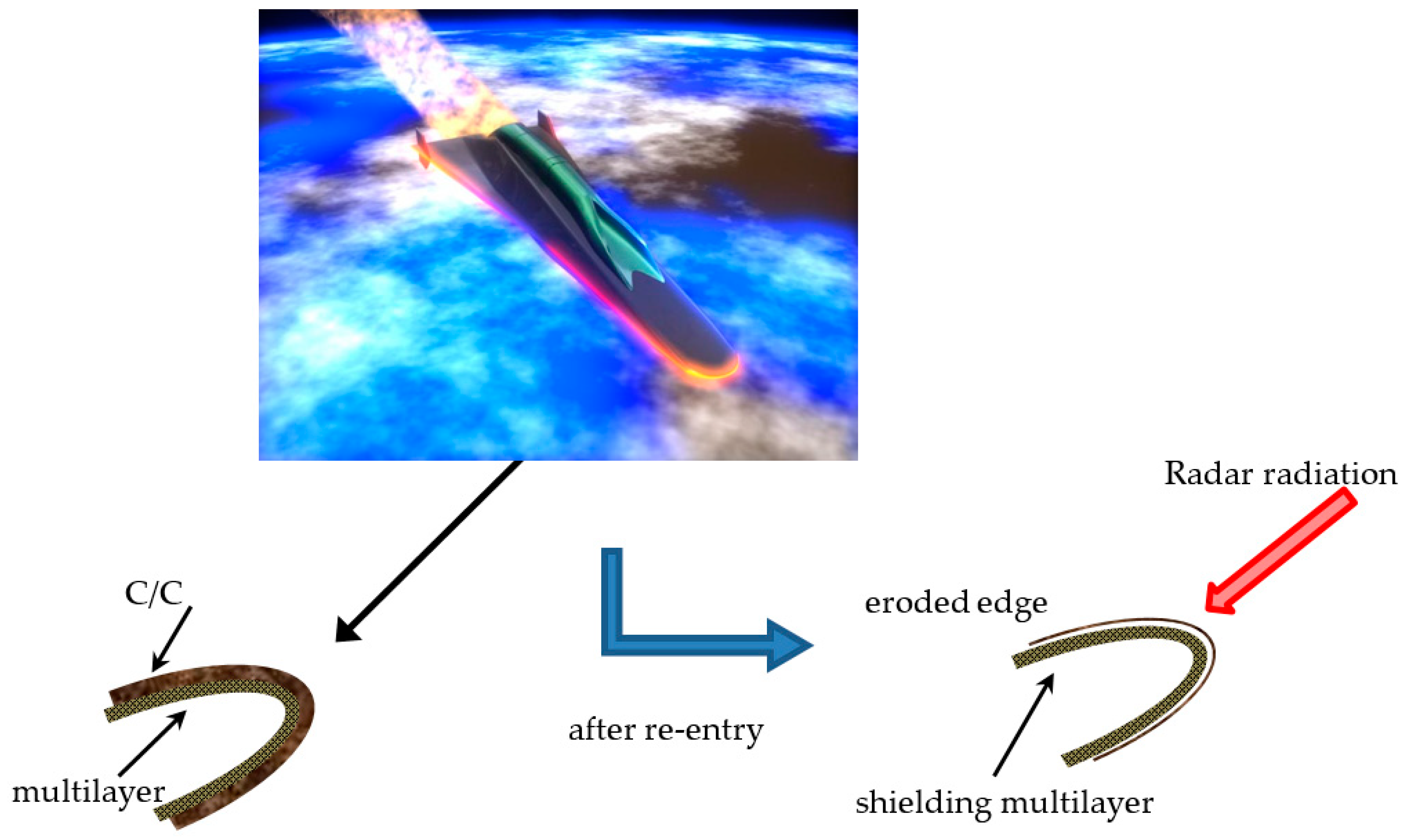
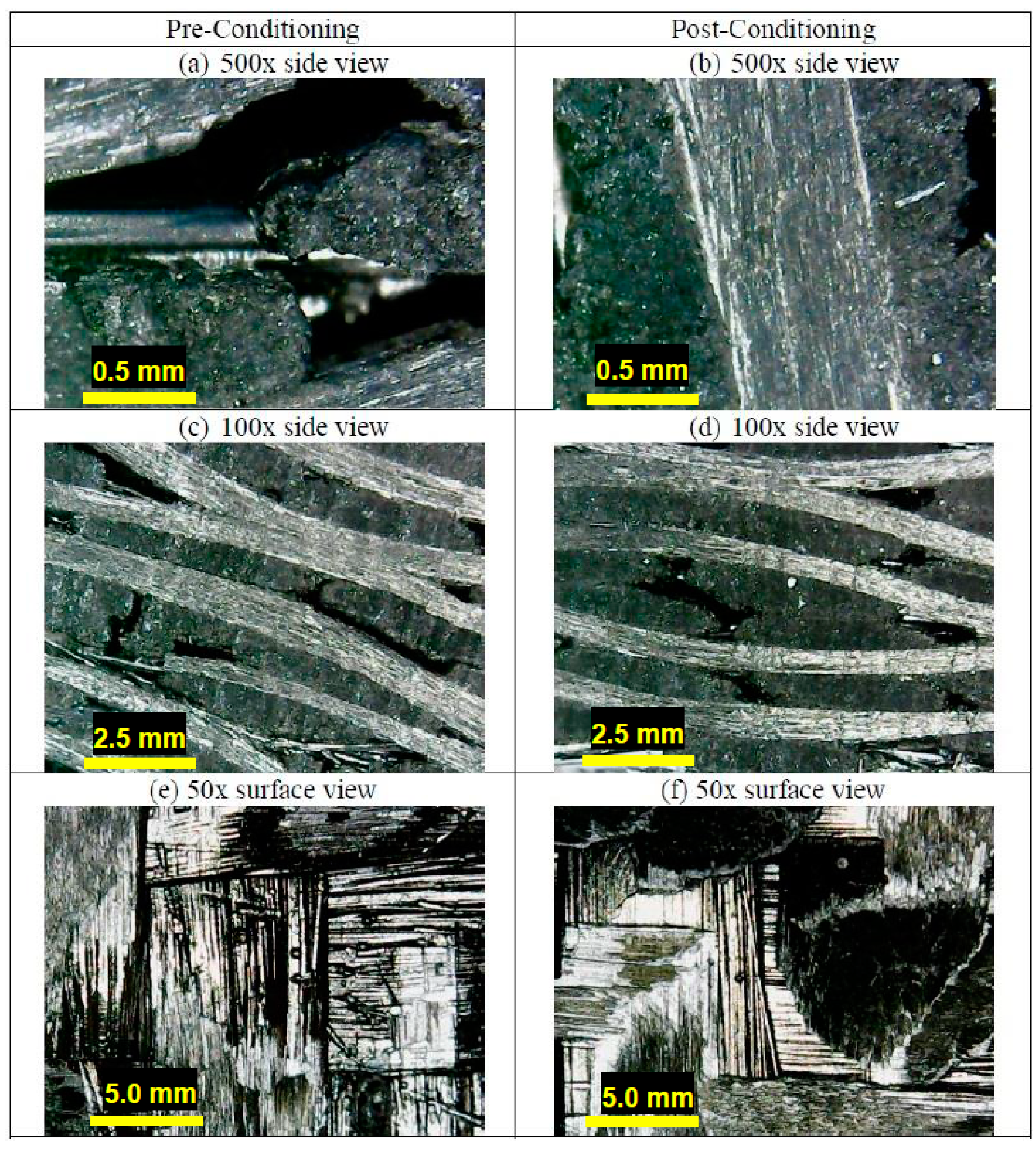
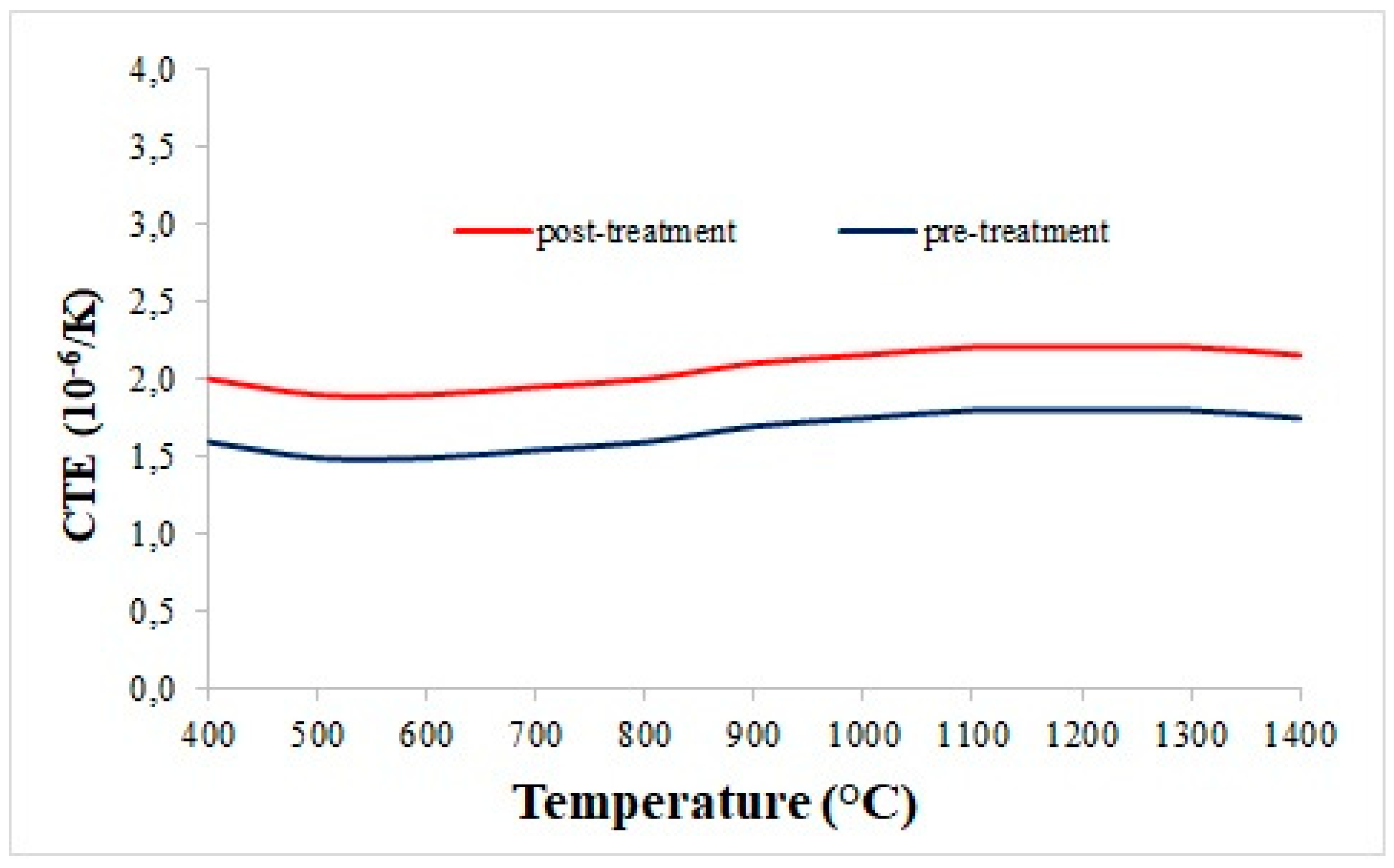
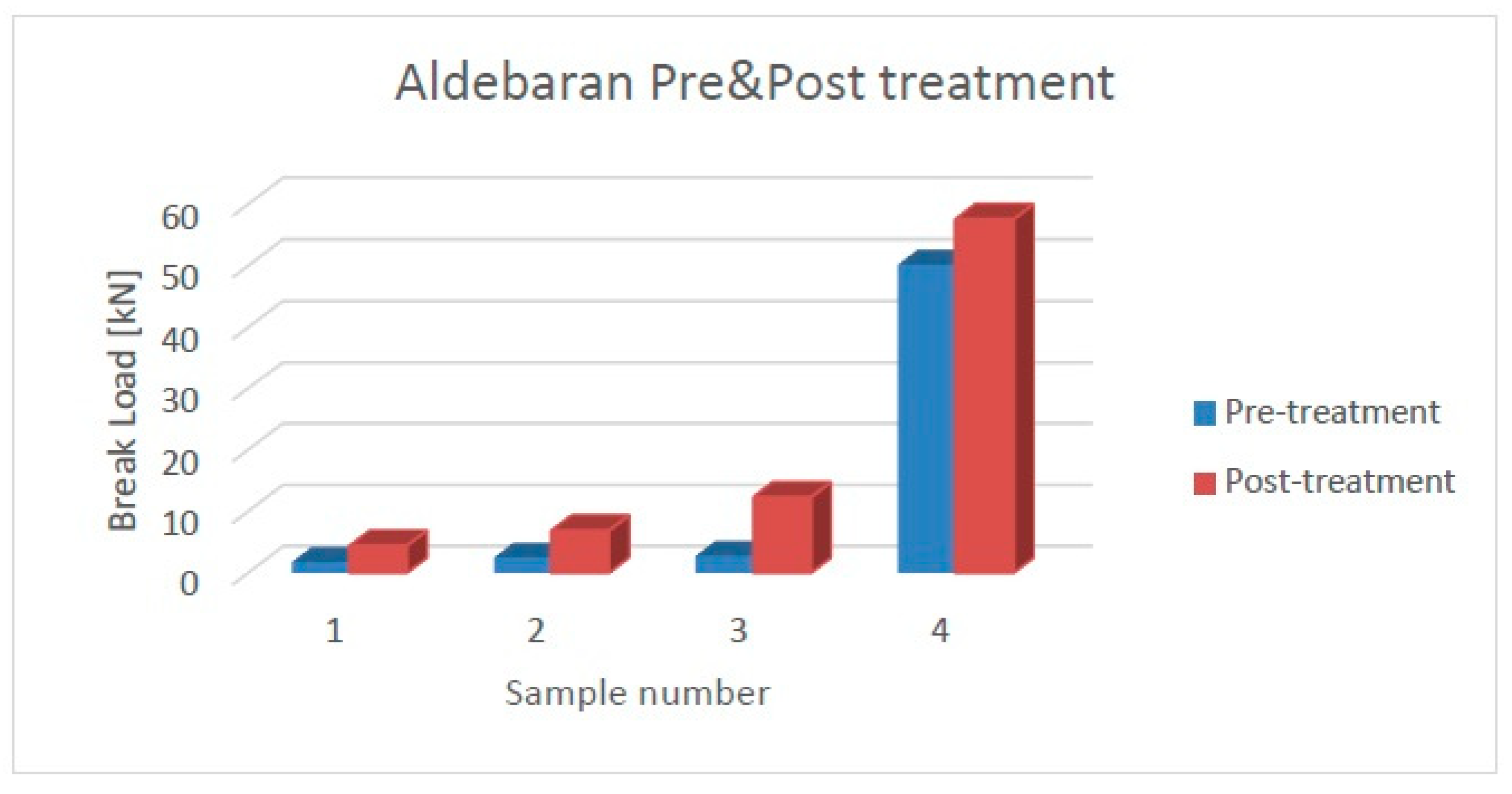
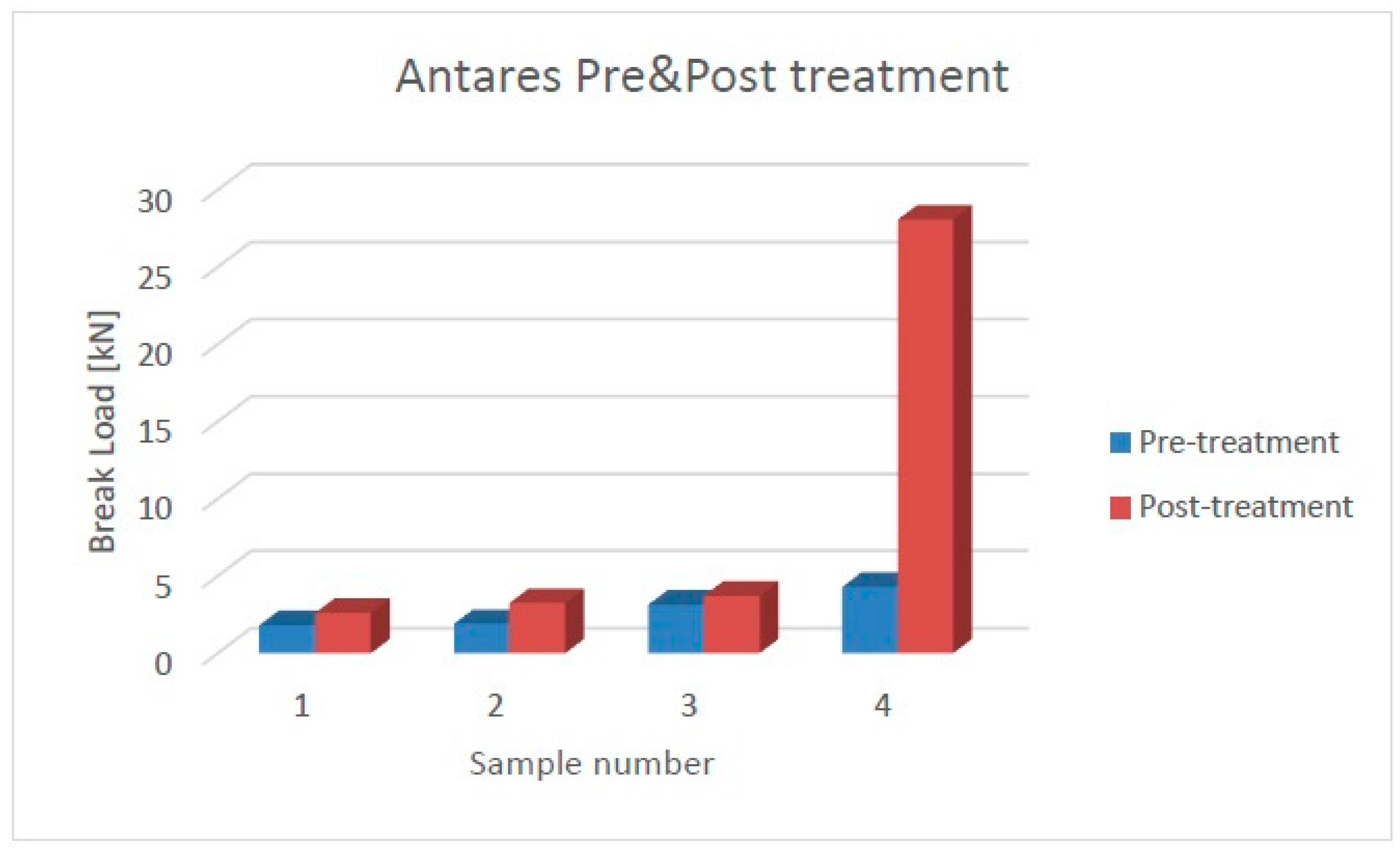
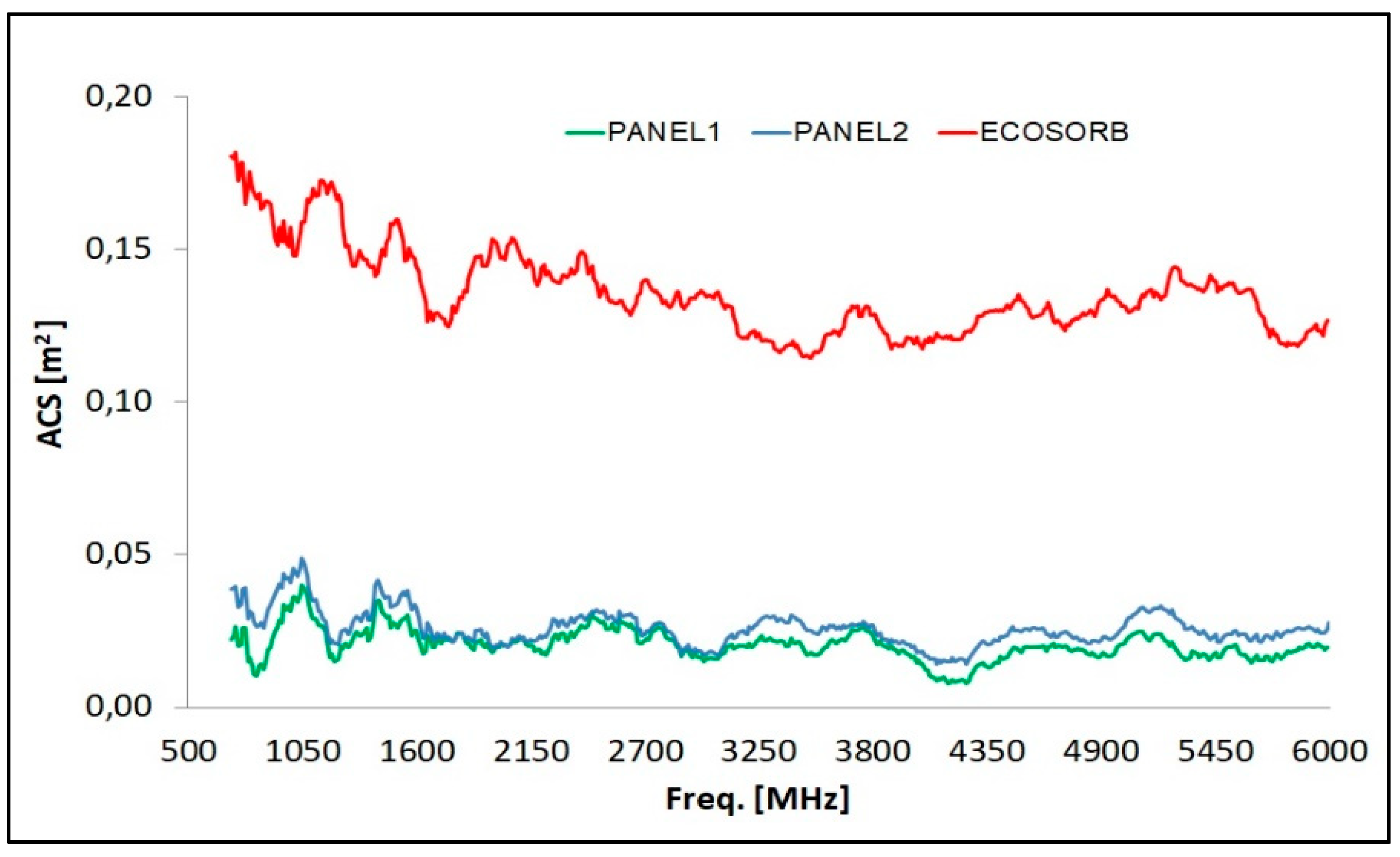
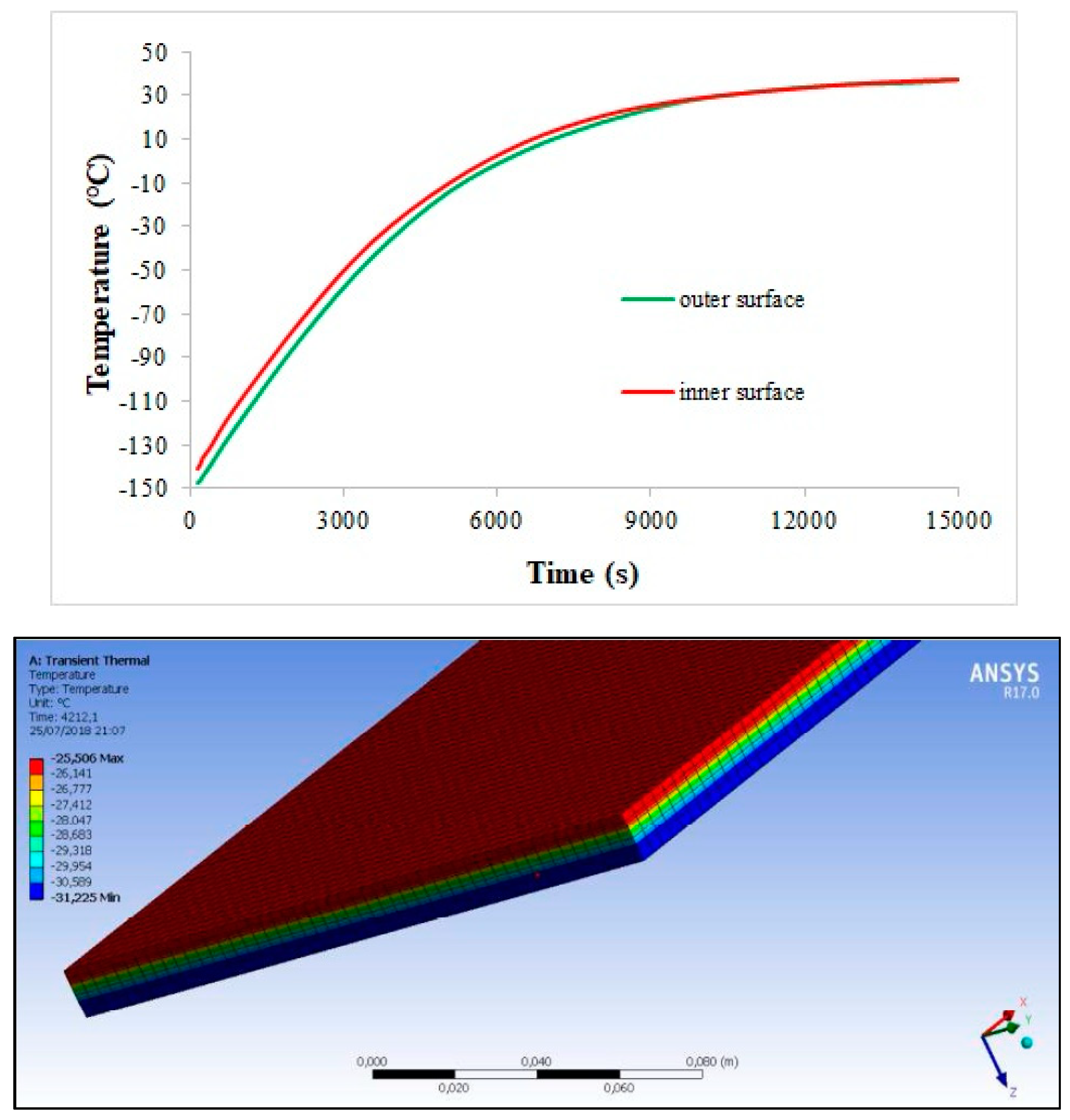
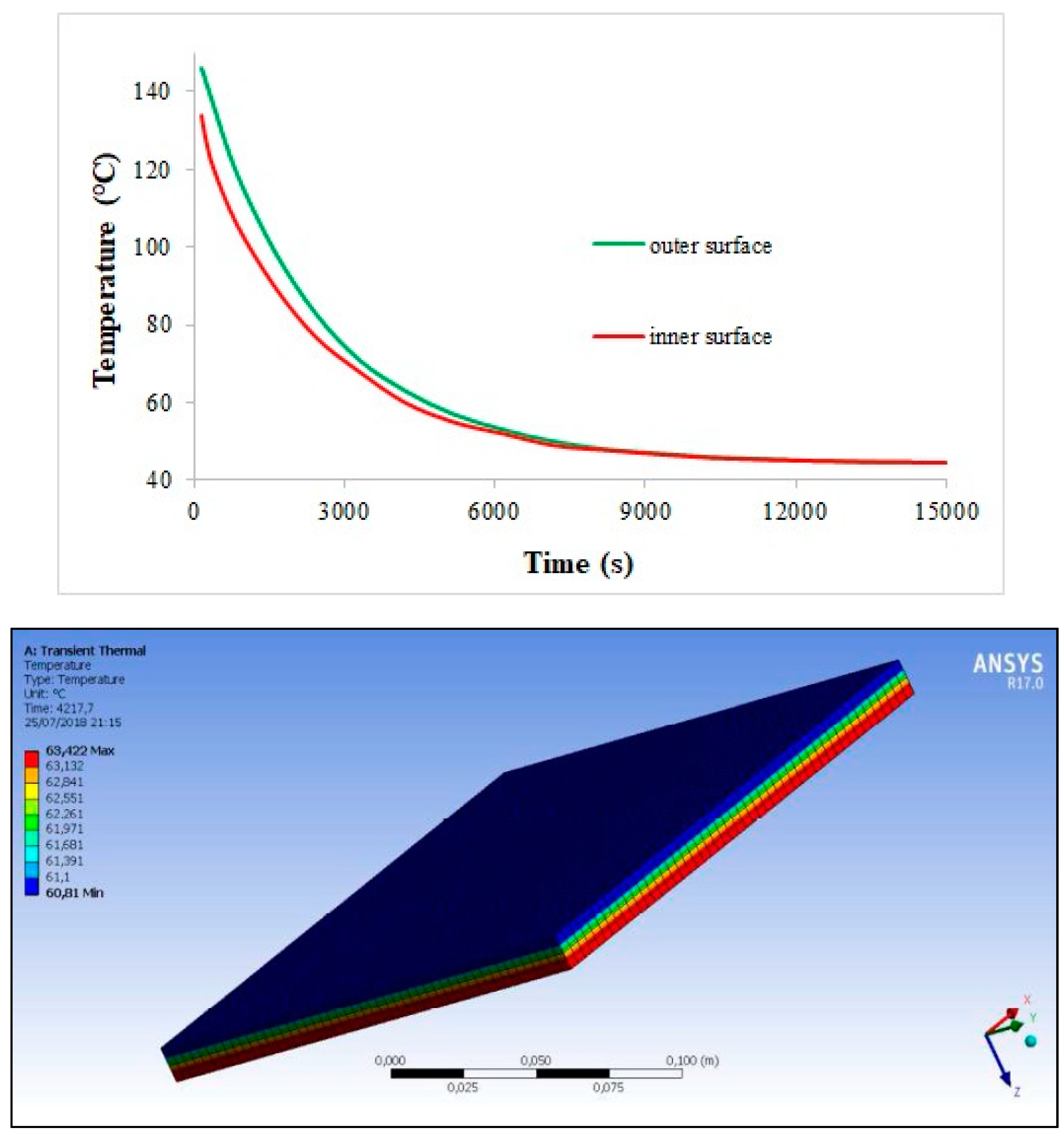
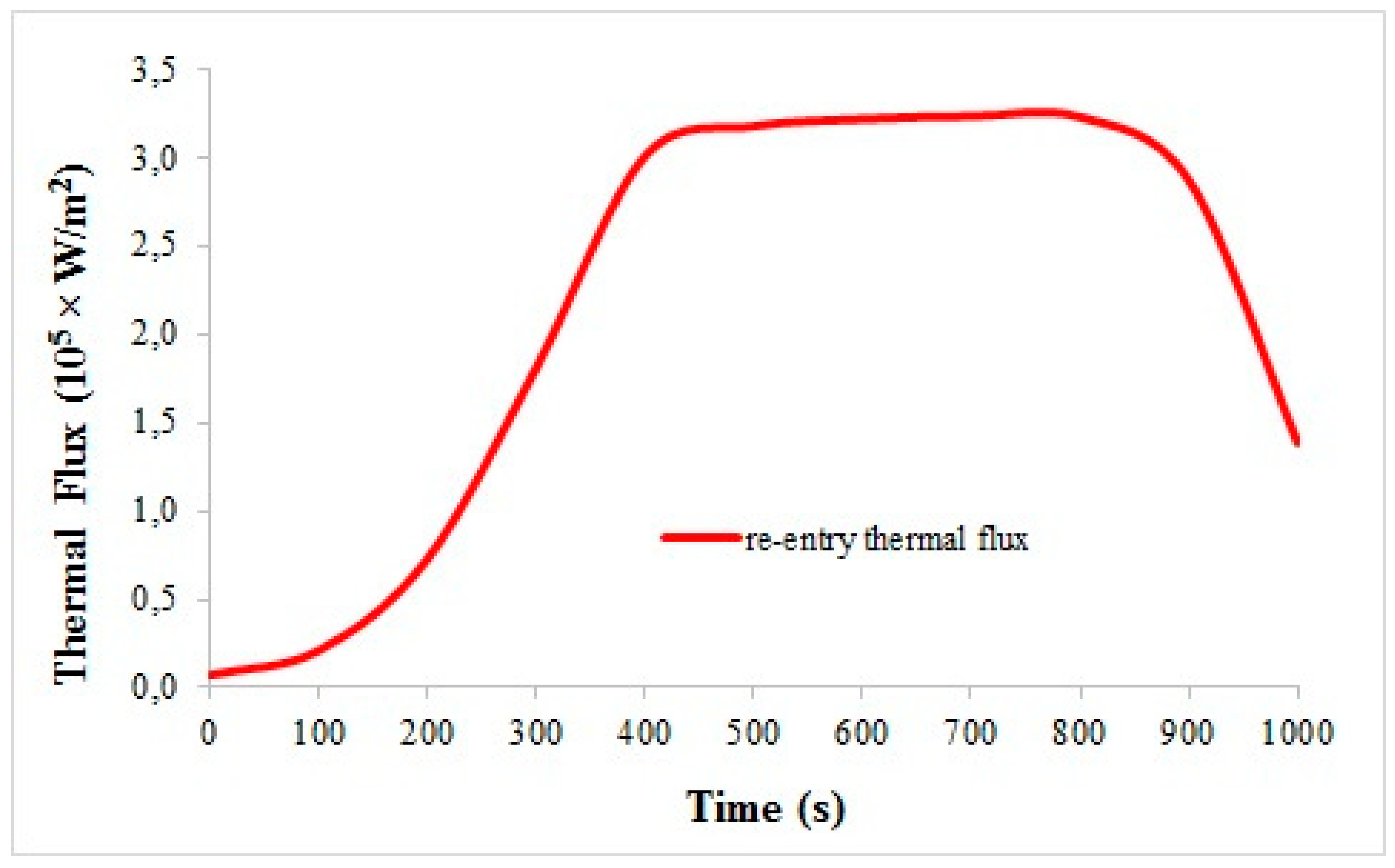
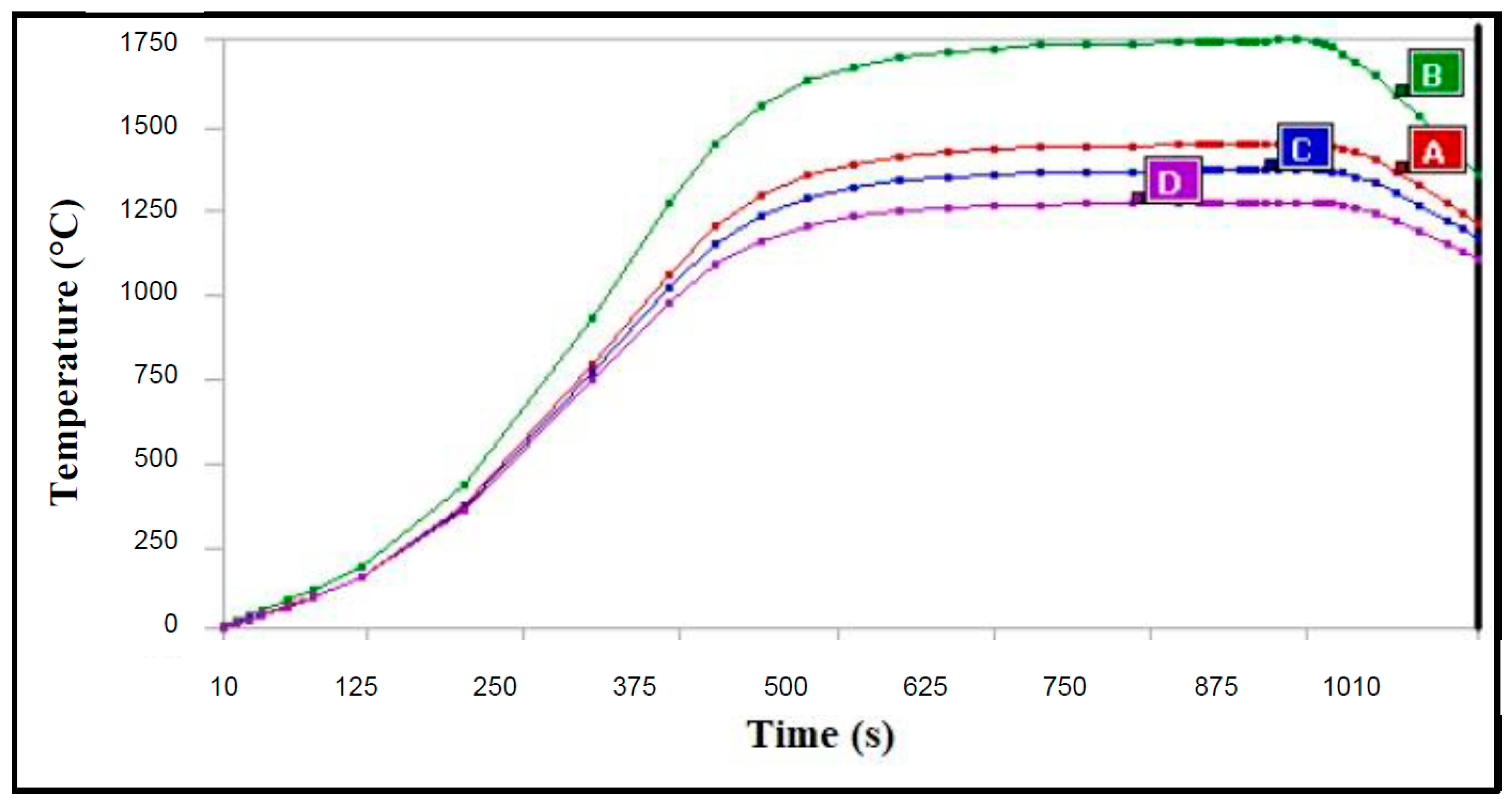
| Property | Temperature, °F (°C) | |||
|---|---|---|---|---|
| 70 (21) | 1500 (816) | 3000 (1649) | 3500 (1927) | |
| Tensile strength-warp longitudinal direction, psi (MPa) | 48.0 × 103 (331) | 54.0 × 103 (372) | 60.0 × 103 (414) | 62.0 × 103 (427) |
| Tensile strength-fill transverse direction, psi (MPa) | 40.0 × 103 (276) | 45.0 × 103 (310) | 50.0 × 103 (345) | – |
| Modulus-warp longitudinal direction, psi (GPa) | 16.5 × 106 (114) | 16.5 × 106 (114) | 15.0 × 106 (103) | 12.5 × 106 (86) |
| Modulus-fill transverse direction, psi (GPa) | 15.8 × 106 (109) | 15.8 × 106 (109) | 14.4 × 106 (99) | 12.0 × 106 (83) |
| Compressive strength-warp longitudinal direction, psi (MPa) | 26.0 × 103 (179) | 33.0 × 103 (228) | 40.0 × 103 (276) | – |
| Compressive strength-fill transverse direction, psi (MPa) | 26.0 × 103 (179) | 30.0 × 103 (207) | 35.0 × 103 (241) | – |
| Item | Fiber Yarn & D-Stitch | Thickness (mm) | Density (g/cm3) |
|---|---|---|---|
| Antares | 12 K/3D | 30–36 | 1.52 |
| Aldebaran | 12 K/4D | 30–36 | 1.46 |
| Item | Sample Number | Weight before Cycle (g) | Weight after Cycle (g) | Total Mass Loss (%) |
|---|---|---|---|---|
| Antares | 1 | 37.30 | 37.25 | 0.13 |
| 2 | 36.51 | 36.44 | 0.19 | |
| 3 | 36.70 | 36.65 | 0.14 | |
| 4 | 37.56 | 37.51 | 0.13 | |
| Aldebaran | 1 | 35.00 | 34.94 | 0.17 |
| 2 | 26.45 | 26.40 | 0.19 | |
| 3 | 34.65 | 34.61 | 0.12 | |
| 4 | 38.67 | 38.60 | 0.18 |
| Temperature (°C) | Average Value of Pre-Treatment (10−6/K) | Average Value of Post-Treatment (10−6/K) | Difference (%) |
|---|---|---|---|
| 400 | 1.60 | 1.60 | 0 |
| 500 | 1.60 | 1.60 | 0 |
| 600 | 1.60 | 1.70 | 6.25 |
| 700 | 1.60 | 1.70 | 6.25 |
| 800 | 1.70 | 1.80 | 5.88 |
| 900 | 1.70 | 1.90 | 11.76 |
| 1000 | 1.70 | 2.00 | 17.65 |
| 1100 | 1.80 | 2.00 | 11.11 |
| 1200 | 1.90 | 2.10 | 10.53 |
| 1300 | 1.90 | 2.10 | 10.53 |
| 1400 | 1.90 | 2.20 | 15.79 |
| 1500 | 1.90 | 2.20 | 15.79 |
| Frequency (MHz) | ACS-Panel 1 (m2) | ACS-Panel 2 (m2) |
|---|---|---|
| 2200 | 0.020 | 0.020 |
| 2250 | 0.025 | 0.030 |
| 2500 | 0.027 | 0.032 |
| 2750 | 0.025 | 0.026 |
| 3000 | 0.017 | 0.019 |
| 3250 | 0.021 | 0.031 |
| 3500 | 0.022 | 0.026 |
| 3750 | 0.026 | 0.027 |
| 4000 | 0.017 | 0.022 |
© 2018 by the authors. Licensee MDPI, Basel, Switzerland. This article is an open access article distributed under the terms and conditions of the Creative Commons Attribution (CC BY) license (http://creativecommons.org/licenses/by/4.0/).
Share and Cite
Delfini, A.; Albano, M.; Vricella, A.; Santoni, F.; Rubini, G.; Pastore, R.; Marchetti, M. Advanced Radar Absorbing Ceramic-Based Materials for Multifunctional Applications in Space Environment. Materials 2018, 11, 1730. https://doi.org/10.3390/ma11091730
Delfini A, Albano M, Vricella A, Santoni F, Rubini G, Pastore R, Marchetti M. Advanced Radar Absorbing Ceramic-Based Materials for Multifunctional Applications in Space Environment. Materials. 2018; 11(9):1730. https://doi.org/10.3390/ma11091730
Chicago/Turabian StyleDelfini, Andrea, Marta Albano, Antonio Vricella, Fabio Santoni, Giulio Rubini, Roberto Pastore, and Mario Marchetti. 2018. "Advanced Radar Absorbing Ceramic-Based Materials for Multifunctional Applications in Space Environment" Materials 11, no. 9: 1730. https://doi.org/10.3390/ma11091730






